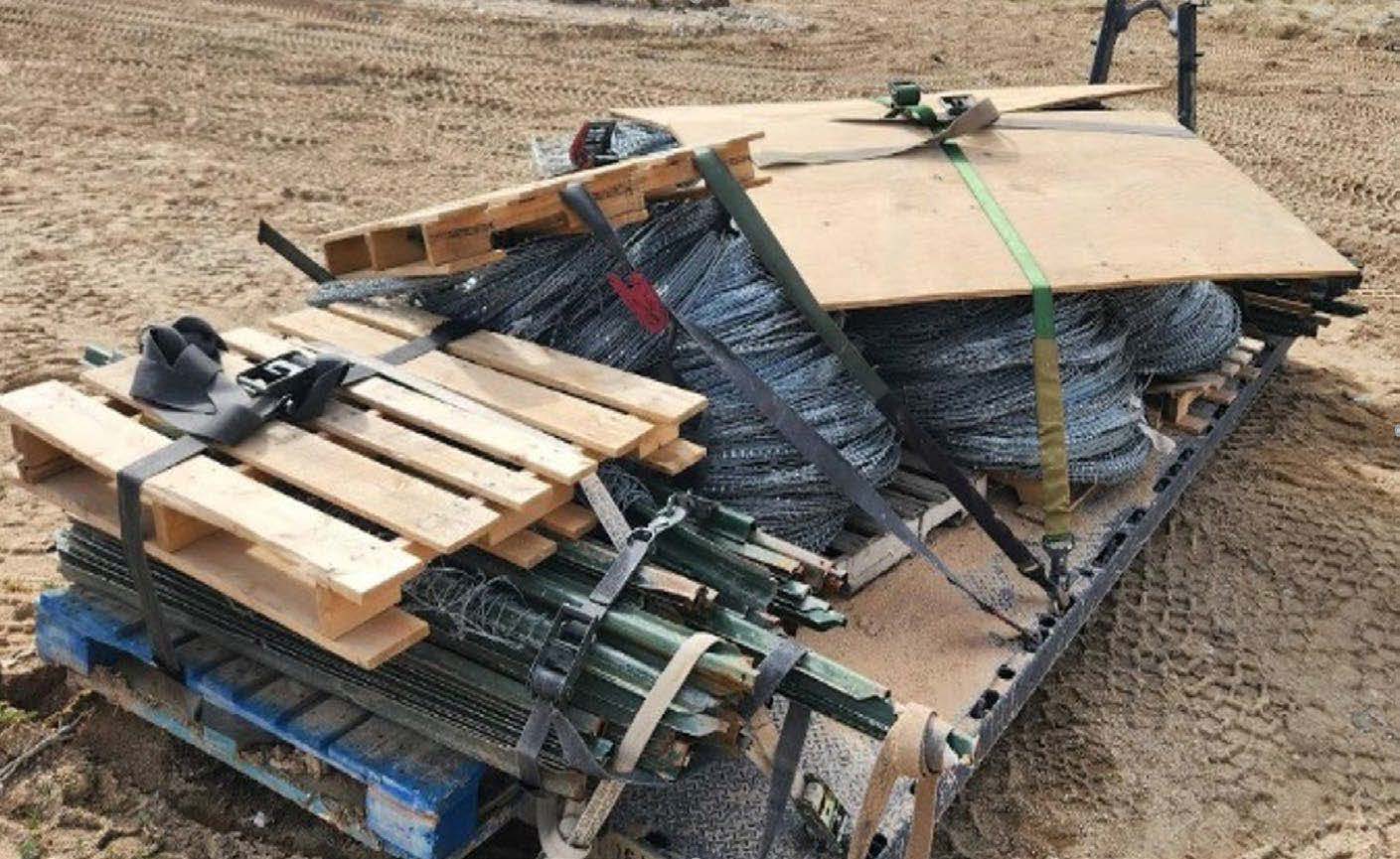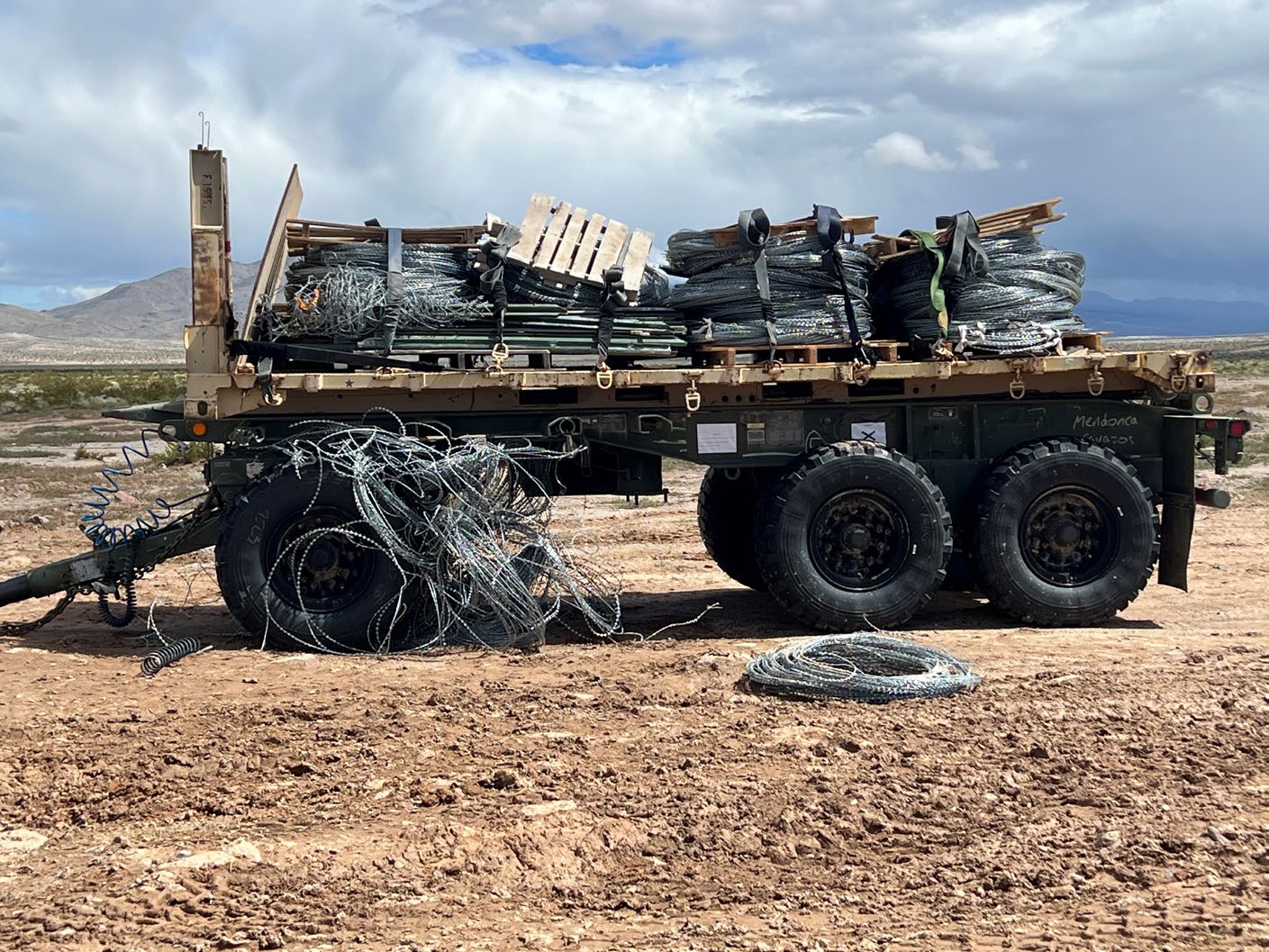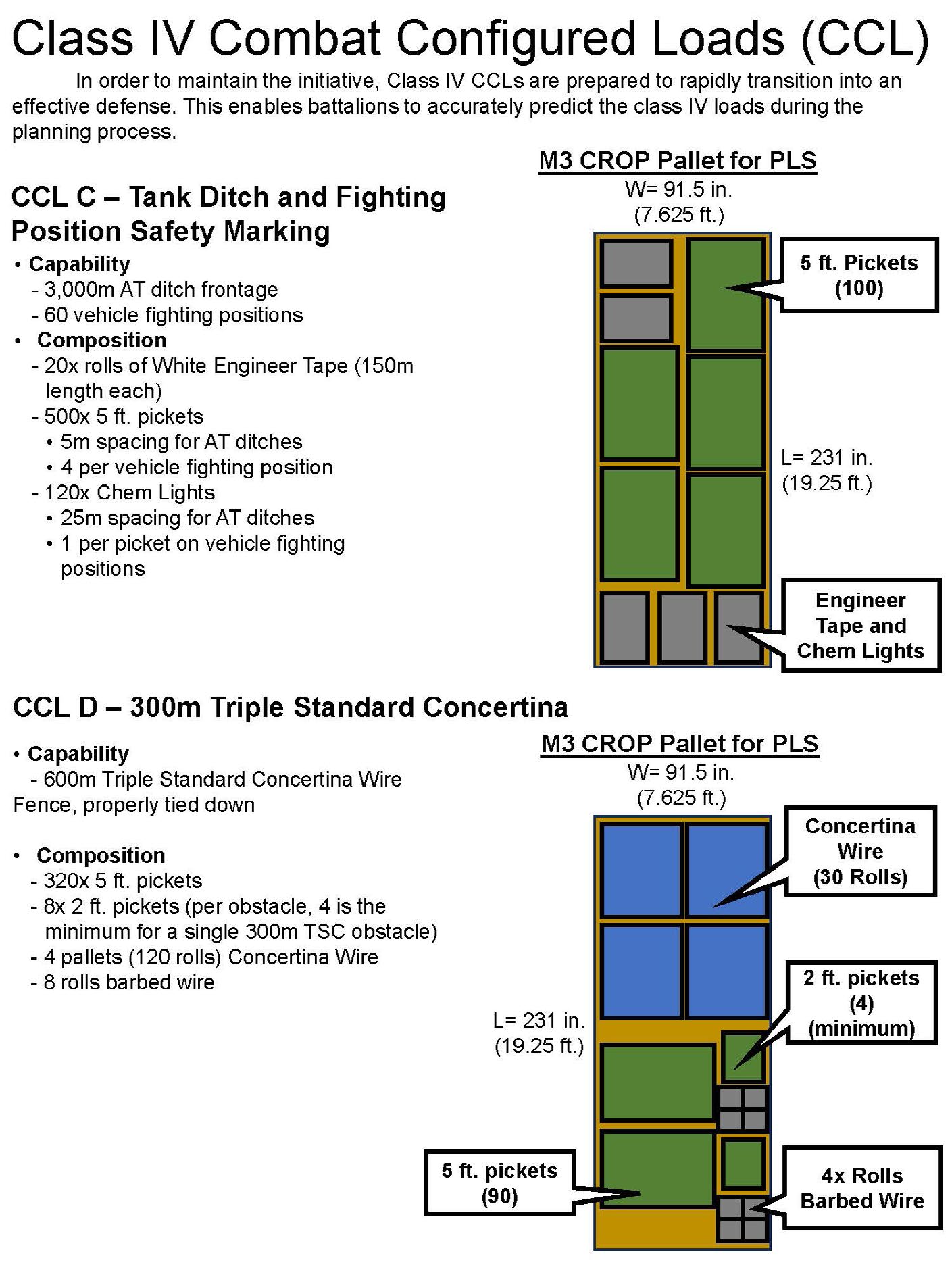The Defensive Lynchpin
Unveiling Vital Role of Class IV Combat Configured Loads in Large-scale Combat Operations
By MAJ William Longwell and CPT Olivia Schretzman
Article published on: October 1, 2024 in the Armor Fall 2024 Edition
Read Time: < 13 mins
As the sun sets over the Central Corridor, following a long day of combined arms breaching, a common story and phrase is echoed from leaders at all echelons to their subordinates as they prepare for the transition to the defense. Bracing for the imminent transition, the commander immediately asks those nearby, “Where are the CCLs (combat configured loads)?” In this pivotal moment, the question underscores the strategic foresight and meticulous preparation essential for success in modern warfare.
Imagine your unit has been fighting through the day for key terrain, and the sun is quickly going down past the horizon. You receive the order to establish a hasty defense and begin engagement area development (Army Doctrine Publication (ADP) 3-90, Offense and Defense, Chapter 4, paragraph 4-29). You call forward your Class IV CCLs, which are dropped off just as the sun sets and the Soldiers on the line begin to pull everything off the flat rack. When they remove the ratchet straps or cut the bands, concertina wire (c-wire) and stakes start getting tangled and stacks fall over. Conducting this disassembly in the dark under night optical devices, making it that much harder.
The scene set above is a common trend at the National Training Center (NTC) and is the lynchpin for a successful transition to the defense. Every minute is important and a commander’s determination to build survivability and counter mobility obstacle effects grows stronger throughout the operation. To build a robust defense, it is imperative that construction materiel (concertina wire, pickets, barbed wire, etc.) and equipment, ammunition, and manpower is in the right place at the right time. Following a successful offensive operation, leaders are already thinking about minimizing risk in the defense. One of the most important ways to mitigate risk to mission and risk to force during the defense is the strategic emplacement of obstacles in specified engagement areas using Class IV CCLs. Class IV CCLs are one of the most vital resources a maneuver commander can use during defensive operations.
This paper explains how properly built CCLs can increase lethality protection, while mitigating risk to mission and risk to force. The authors provide examples of integrating Class IV CCL preparations into unit standing operating procedures (SOPs). It emphasizes the need for streamlined processes and a comprehensive understanding of resource allocation across all levels of command synchronization matrix (SYNCMAT) and execution checklist (EXCHECK) integration. The following paper can help units enhance their defensive capabilities and prepare leaders with the tools to plan for contingencies with greater efficiency and readiness in defensive operations and large-scale combat scenarios.

Figure 1. Poorly built CCL loaded with concertina wire, pickets, and barbed wire. Note the Concertina Wire falling over and randomly placed ratchet straps. (U.S. Army photo by CPT Olivia Schretzman and MAJ William Longwell)
Background
According to Army Techniques Publication (ATP) 3-90.8, Combined Arms Countermobility, Paragraph 3-79, “obstacle resource planning, delivery, and emplacement are facilitated by CCLs.” In a brigade combat team (BCT) large scale combat operations (LSCO) fight, CCLs are mostly referred to as Class IV (construction and barrier materials) and Class V (ammunition) packages, prepared ahead of an operation to be moved forward to units (in need of those supplies) on an M3 Container Roll-in/Out Platform flat rack.
The term “CCL” can be used for any pre-configured load package of any class of supply; however, this article will focus on Class IV CCLs for defensive preparations. CCLs can be configured in any method to best enable forward elements to quickly receive the supplies they need to prepare to continue fighting or defending against an enemy. Additionally, CCLs of Class IV should be developed given the identified terrain, and the most likely type of obstacles or fighting positions a unit expects to emplace. CCLs cannot solely be a logistics officer or an engineer planner’s priority. The management of CCLs is a leader priority across all warfighting functions.
There are hundreds of Class IV CCL configurations a BCT may use in LSCO operations. For example, Class IV CCLs include construction material to build marking or “fratricide” fences, 300-meter Triple Strand Concertina Wire obstacles, and include concertina wire, pickets (long and short), barbed wire, and even plywood. Class IV CCLs optimize resource utilization by providing standardized sets of construction materials tailored to specific defensive requirements. This standardization reduces logistical complexity, minimizes waste, and ensures units have the necessary resources to execute defensive operations effectively. A unit’s tactical SOPs (TACSOPs) outline its desired CCL configurations and is vital for shared understanding at echelon.
Engagement areas use multiple Class IV CCLs and need to be strategically emplaced close to the desired obstacle location to maximize emplacement time for the emplacing unit. While it may seem simple to have the Class IV CCLs on hand before the transition to the defense, moving CCLs through specified breach points or restricted terrain can take many hours. Addition ally, having the CCLs on hand is not always the most significant factor in CCL management. Instead, the way that CCLs are managed and configured can impact mission success the most. At the NTC, it is a common trend that CCLs are not always built or maintained in accordance with the unit SOPs. These poorly assembled CCLs can significantly slow down defensive operations and prevent obstacle effects (block, fix, disrupt, turn) from being accomplished in the mission timeframe.
While it might not be the main effort, planning for CCL movement is still an enabling operation (movement of CCLs to the forward line of troops) and is vital in maintaining tempo and flexibility. To transition successfully to the defense during LSCO, planners need to focus on the efficient handling and deployment of Class IV construction materials, contained within CCLs and this represents a pivotal yet often overlooked aspect of defensive planning. At venues like the NTC, the hurried preparation and poorly built resource packages during reception, staging and onward integration (RSOI) can significantly impact defensive operations in LSCO.
During rotations at the NTC, units often use CCLs of concertina wire and pickets to build disruption obstacles of double or triple strand concertina wire integrated with direct and indirect fires. Building a 300-meter-long obstacle of triple-strand concertina requires 160 long pickets, eight rolls of barbed wire and 60 rolls of concertina wire. Observer/coach/trainers (O/C/Ts) witness that if not properly packaged and secured, removing one picket from the stack can cause the entire package to fall apart during transportation. If not labeled properly, the forward receiving unit likely will be unable to identify what obstacle can be built with the supplied Class IV.
During a previous rotation, a brigade’s (BDE’s) protection SOP specified how CCLs should be built, but not one CCL was built to that standard. This became a larger issue when the battalion (BN) protection officer assumed there was enough wire to prepare 300 meters of triple strand concertina wire, when there was only 200 meters in the delivered CCL.
Create, train, validate SOPs for CCL assembly
A simple way for BCTs and their downtrace battalions and companies to be more effective while preparing for a defense, and save valuable time is to spend the time up front creating an SOP for how CCLs are assembled, marked and managed. The unit must then train on this SOP to validate it. At the NTC, rotational units usually train on at least two defenses. Most rotations include a hasty defense and a deliberate defense. Despite knowing they will train on defenses up front; we often see CCL preparation and management take a back seat to other tasks the rotational training unit must do during RSOI.

Figure 2. Consequences of a poorly built CCL, Concertina Wire falling off and into an axle. (U.S. Army photo by CPT Olivia Schretzman and MAJ William Longwell)
How Class IV CCLs are built, labeled and disassembled to build wire obstacles and fighting positions, should be understood across a BCT formation. These points should be included in the brigade and battalion TACSOPs. The following is an example of a CCL standardization in a protection SOP.
When preparing for the defense, it is imperative that the composition and location of CCLs are integrated into unit planning and rehearsals. All leaders need to understand the unit’s CCL disposition; however, it is particularly important for brigade S-4s and brigade engineers to thoroughly understand and brief this aspect during orders production and rehearsals. At the battalion level, leveraging the expertise of S-4s and Battalion Engineers or Battle Captains to brief CCL locations and composition during rehearsals, can significantly enhance operational readiness. Tracking the movement of CCLs throughout defensive preparations is equally important as it ensures seamless coordination across the battlefield.
Shared awareness
Incorporating CCL transfers into SYNCMATs or EXCHECKs can foster shared situational awareness within the formation. Including CCLs in friendly force information requirements, specifying their location, current ownership, and disposition, enhances battlefield transparency for all subordinates. Additionally, a critical decision point for commanders arises in determining when to deploy CCLs to facilitate obstacle emplacement. To aid staff members and leaders in risk mitigation, a risk mitigation strategy example is provided (Figure 5. Risk Mitigation if Class IV CCLs are limited) and identifies how you can mitigate risk using other assets for a defense, such as blade assets or using explosive measures. Recognizing the pivotal role of Class IV in defensive planning, strategies utilizing target reference points and vehicle fighting positions are recommended to mitigate shortages. However, insufficient Class IV resources can significantly constrain engagement area development and increase the risk of minefield fratricide, underscoring the importance of adequate logistical support.
Ultimately, the responsibility for CCLs falls on maneuver and sustainment leaders at both battalion and company levels. By integrating CCL management into operational rehearsals and decision-making processes, units can ensure the effective use of vital logistical assets, which will lead to mission success and increased lethality in LSCO.

Figure 3. CCL C and CCL D include Class IV examples from a brigade TACSOP (36th Engineer BDE). (U.S. Army table by CPT Olivia Schretzman and MAJ William Longwell)
Conclusion
To streamline efficiency and enhance readiness for future operations and training at the NTC, we propose the following recommendations.
- Establish an SOP for Class IV CCLs at the brigade level and disseminate it down to the platoon level.
- Specify stacking and securing procedures for Class IV CCL materials to ensure consistency, stability, ease of access and disassembly.
- Clearly label each Class IV CCL with its contents and indicate the type of obstacle that can be constructed using the materials provided. This could be on a Meals Ready to Eat box, “100mph” tape, or other available material that is weatherproof.
- During planning, designate responsibilities for transporting and receiving Class IV CCLs to ensure smooth and timely coordination and execution.
- During rehearsals, the BDE/BN S-4 and BDE/BN engineer should brief the composition and locations of CCLs for planned defenses. Individuals who own the CCL at each phase and position should also brief during the rehearsal.
By implementing these measures, leaders at all echelons will have a clear understanding of the contents and purpose of Class IV CCLs. This will enable units to efficiently plan, prepare, and employ obstacles for both hasty and deliberate defensive operations. The adoption of these practices will undoubtedly yield significant dividends in terms of operational effectiveness and preparedness for challenges encountered in LSCO. MAJ William Longwell is an Infantry officer, currently serving as a Task Force executive officer observer/coach/ trainer at NTC, Fort Irwin, CA. His previous assignments include Regimental S-3, 3rd U.S. Infantry Regiment “The Old Guard,” Joint Base Myer–Henderson Hall, VA; battalion S-3, 4thBattalion, 3rd U.S. Infantry Regiment; legislative liaison, Office of the Chief Legislative Liaison, Pentagon, VA; and defense fellow, Senate, Capitol Hill, Washington, D.C. MAJ Longwell’s military schools include Infantry Basic Officer Leader Course, Maneuver Captains Career Course, Command and General Staff College, Recon Surveillance Leader Course, Pathfinder School, Airborne School, Jumpmaster School, and Ranger School. He has a Bachelor of Arts degree in psychology from Shippensburg University and Master of Professional Studies (MPS) degree in legislative affairs from The George Washington University, Washington, D.C. MAJ Longwell’s awards and badges include the Purple Heart Medal, Meritorious Service Medal (2nd oak leaf cluster), Com bat Infantryman Badge, Expert Infantryman Badge, Ranger Tab, Senior Parachutist Badge, and Pathfinder Badge.
CPT Olivia Schretzman is a lead engineer observer/coach/trainer (O/C/T) at the National Training Center. Her previous assignments include commander, 511th Engineer Dive Detachment, Joint Base Langley-Eustis, VA, (the first female dive commander in the U.S. Army); 101st Airborne Division (Air Assault) for four years; and construction officer for Task Force Bastogne in support of Operation Inherent Resolve in Kirkuk, Iraq; While deployed she also performed duties as plans officer for the 326th Brigade Engineer Battalion. Other previous assignments include Sapper executive officer, Sapper platoon leader, Military Intelligence Company operations officer, and battalion S-1. CPT Schretzman’s military schools include the Engineer Basic Officer Leader Course, Unit Movement Officer Course, Transportation Coordinators’ Automated Information for Movement System (TCAIMS-II) Course, Sapper Leader Course, Pathfinder, Air Assault School, Engineer Captains Career Course, and the Marine Engineer Dive Officer Course. She has a Bachelor of Science degree in leader development science from the U.S. Military Academy and a master of engineering (MEng) degree in engineering management from Vanderbilt University. CPT Schretzman’s awards and badges include the Army Commendation Medal (2nd oak leaf cluster), Army Achievement Medal (1st oak leaf cluster), National Defense Service Medal, Inherent Resolve Campaign Medal, Global War on Terrorism Service Medal, Military Outstanding Volunteer Service Medal, Army Service Ribbon, Joint Diving Officer Badge, Pathfinder Badge, Air Assault Badge, and Sapper Tab. She is the 2017 Grizzly Award Recipient (Engineer Regiment’s Platoon Leader of the Year). CPT Schretzman was the Naval and Dive Salvage Training Center Joint Dive Officer 20-20 Hooyah Award Recipient Figure 4. Marking examples using materials available. Key is shared understanding of what these markings denote. (U.S. Army photo by CPT Olivia Schretzman and MAJ William Longwell) and was ranked #1 in her class. CPT Schretzman is also the recipient the 2022 U.S. Army’s General Douglas MacArthur Leadership Award. She has published papers in the New York Times and Army Engineer Magazine.
Acronym Quick-Scan
BCT – brigade combat team
BDE – brigade
BN – battalion
CCL – combat configured load
EXCHECK – execution checklist
LSCO – large-scale combat operations
NTC – National Training Center
O/C/T – observer/coach/trainer
RSOI – reception, staging, and onward integration
SOP – standing operating procedure
SYNCMAT – synchronization matrix
TACSOP – tactical standing operating procedure
Figure 4. Marking examples using materials available. Key is shared understanding of what these markings denote. (U.S. Army photo by CPT Olivia Schretzman and MAJ William Longwell)